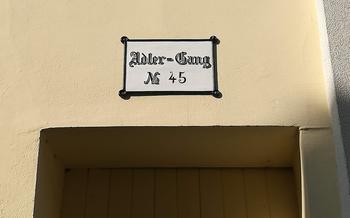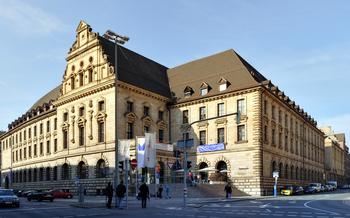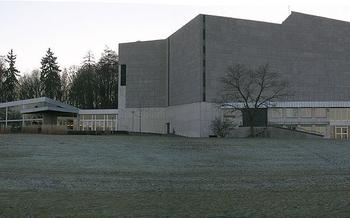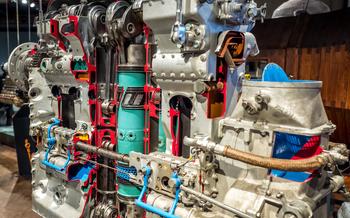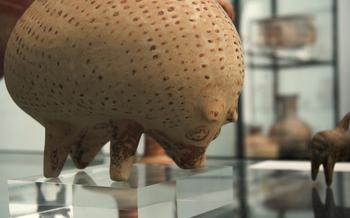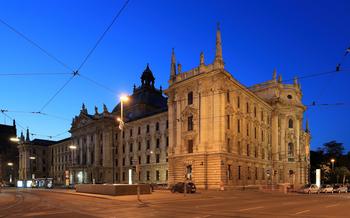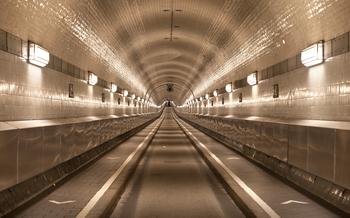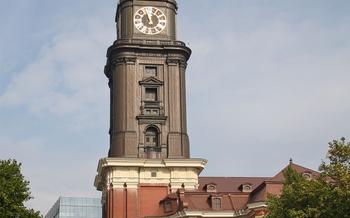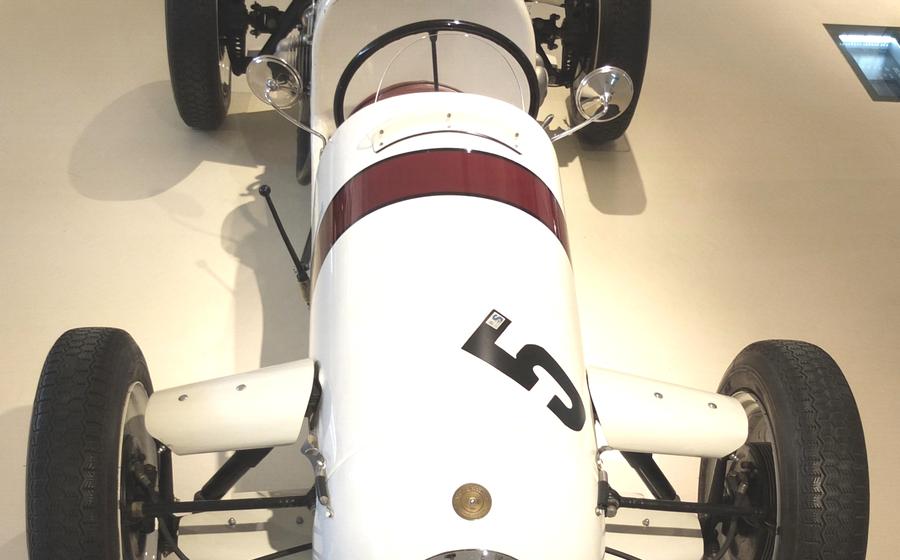
Prototyp Car Museum
- A Drive Through History
- Prototypes: The Building Blocks of Innovation
- A Peek Behind the Scenes
- Interactive Exhibits for Hands-On Learning
- The Evolution of Automotive Design
- Engineering Marvels Under the Hood
- The Human Element: Designers and Engineers
- Prototypes That Never Made It to Production
- Prototypes of the Future
- Behind the Wheel of a Prototype
- Educational Programs for All Ages
- Events and Exhibitions Throughout the Year
- A Memorable Gift Shop for Car Enthusiasts
- Getting to the Prototyp Car Museum
- Insider Tip: Guided Tours for an In-Depth Experience
A Drive Through History
The Prototyp Car Museum in Hamburg, Germany, is a treasure trove for car enthusiasts and history buffs alike. This remarkable museum showcases a unique collection of prototype vehicles, each representing a pivotal moment in automotive history. From the earliest horseless carriages to futuristic concept cars, the Prototyp Car Museum offers a comprehensive journey through the evolution of automotive design and engineering.
Visitors can marvel at the sleek lines of the 1938 Auto Union Type C, one of the most advanced racing cars of its time. Or they can step inside the futuristic cabin of the 1955 Chrysler Turbine Car, a pioneering vehicle that ran on jet fuel. Each prototype on display tells a story of innovation, experimentation, and the relentless pursuit of automotive excellence.
Beyond the cars themselves, the museum also delves into the fascinating stories behind their creation. Visitors can learn about the visionary engineers and designers who pushed the boundaries of automotive technology, as well as the challenges and triumphs they faced along the way. Interactive exhibits, multimedia displays, and personal anecdotes bring the history of these prototypes to life, making the Prototyp Car Museum an unforgettable experience for visitors of all ages.
Prototypes: The Building Blocks of Innovation
Prototypes are not merely showpieces; they serve as crucial tools in the automotive industry, enabling engineers to refine designs, test new technologies, and push the boundaries of innovation. These vehicles represent a vital stage in the development process, where ideas transform into tangible creations.
Prototypes allow engineers to assess the feasibility of new designs, identify potential issues, and make necessary modifications before committing to mass production. They enable real-world testing under various conditions, ensuring that vehicles meet safety, performance, and efficiency standards.
The development of prototypes is a complex and iterative process, involving multiple stages of design, testing, and refinement. Engineers must consider various factors, including aerodynamics, ergonomics, and manufacturability, to create a functional and aesthetically pleasing vehicle.
Prototypes have played a pivotal role in some of the most groundbreaking innovations in automotive history. For instance, the Volkswagen Beetle prototype, known as the KdF-Wagen, underwent extensive testing and modifications before becoming the iconic vehicle we know today. Similarly, the Toyota Prius prototype paved the way for the development of hybrid technology, revolutionizing the automotive industry.
Through prototypes, engineers can bring their creative visions to life, experiment with new ideas, and push the limits of what's possible. These vehicles embody the spirit of innovation and serve as a testament to the ingenuity and dedication of automotive designers and engineers.
A Peek Behind the Scenes
The Prototyp Car Museum houses a team of skilled professionals dedicated to preserving and maintaining the museum's unique collection of prototype vehicles. These experts possess a deep understanding of automotive history and the intricacies of prototype engineering. Their work involves carefully restoring vintage prototypes to their original condition, ensuring that these rare vehicles remain in pristine condition for future generations to appreciate.
The restoration process begins with a thorough assessment of each prototype's condition. The team carefully examines the vehicle, identifying areas that require attention. They then meticulously disassemble the vehicle, documenting each step of the process to ensure accurate reassembly later.
Restoring a prototype often requires custom-made parts, as these vehicles were often one-of-a-kind creations. The museum's team works closely with skilled craftsmen to replicate missing or damaged parts, ensuring that the restoration remains faithful to the original design.
The challenges of prototype restoration lie in the scarcity of information and parts. These vehicles were often built in limited quantities, and documentation may be limited or nonexistent. The team relies on their expertise and research skills to overcome these challenges, drawing on their knowledge of automotive history and engineering to make informed decisions about the restoration process.
The museum's restoration team takes pride in their work, knowing that they are preserving a piece of automotive history. Their dedication and expertise ensure that these rare prototypes continue to captivate and inspire visitors, providing a glimpse into the evolution of automotive design and engineering.
Interactive Exhibits for Hands-On Learning
The Prototyp Car Museum offers a range of interactive exhibits that allow visitors to explore the inner workings of prototypes and engage with automotive history in a hands-on way. These exhibits are designed to educate and entertain visitors of all ages, making the museum a popular destination for families and car enthusiasts alike.
One of the highlights of the museum is the virtual reality (VR) experience, which allows visitors to simulate driving some of the most iconic prototype vehicles. With VR headsets and realistic controls, visitors can experience the thrill of driving these unique cars on virtual test tracks, immersing themselves in the history and evolution of automotive design.
For younger visitors, the museum features a dedicated kids' area with interactive activities that introduce them to the world of car design and engineering. Through hands-on activities, kids can learn about the different components of a car, how engines work, and the importance of safety features. These interactive exhibits not only entertain children but also spark their curiosity and inspire them to pursue careers in STEM fields.
I vividly remember the first time I visited the Prototyp Car Museum with my young son. He was immediately drawn to the interactive exhibits, particularly the VR experience. He spent hours simulating driving different prototypes, learning about their unique features and the challenges faced by automotive engineers. The experience not only ignited his passion for cars but also showed him the importance of innovation and technology in the automotive industry.
These interactive exhibits are a testament to the museum's commitment to providing an immersive and educational experience for its visitors. They allow visitors to not only admire the prototypes on display but also to engage with them on a deeper level, fostering a greater appreciation for the history, design, and engineering that go into these remarkable vehicles.
The Evolution of Automotive Design
Throughout the decades, prototype cars have served as catalysts for the evolution of automotive design, shaping the look, feel, and functionality of modern production vehicles. These concept cars have introduced groundbreaking design trends and innovations that have later influenced the mass market.
One prime example is the 1955 Chrysler Turbine Car, a futuristic prototype that showcased the potential of gas turbine engines in automobiles. Its sleek and aerodynamic body, characterized by a distinctive turbine-shaped grille, set the stage for future design trends in the automotive industry.
Another notable prototype that left a lasting impact on automotive design is the 1968 Alfa Romeo Carabo. With its wedge-shaped profile, scissor doors, and aggressive stance, the Carabo epitomized the radical design language of the 1960s and 1970s. Its influence can be seen in the design of several production sports cars that followed.
These are just a few examples of how prototype cars have shaped the evolution of automotive design. By pushing the boundaries of creativity and innovation, prototypes have paved the way for the stylish, efficient, and technologically advanced vehicles we see on the roads today.
Engineering Marvels Under the Hood
The Prototyp Car Museum is home to a treasure trove of engineering marvels, showcasing the cutting-edge technologies that have pushed the boundaries of automotive engineering. These prototype cars are not just design exercises; they represent the bleeding edge of automotive innovation, where engineers have the freedom to experiment with new ideas and technologies without the constraints of mass production.
One of the most fascinating aspects of these prototypes is the way they integrate new technologies into their designs. From lightweight materials and aerodynamic designs to advanced powertrains and autonomous driving systems, these cars are a testament to the ingenuity and creativity of automotive engineers.
Visitors to the museum can get up close and personal with these engineering marvels, examining the intricate details and innovative solutions that make these prototypes so unique. Whether it's the sleek lines of a wind tunnel-tested body or the complex mechanics of a hybrid powertrain, there's something to captivate and inspire every visitor.
Personal stories from engineers who have worked on these prototypes add a human element to the exhibits, giving visitors a glimpse into the challenges and triumphs of bringing these cutting-edge vehicles to life. These stories provide a deeper understanding of the passion and dedication required to push the boundaries of automotive engineering.
The Human Element: Designers and Engineers
Behind every prototype car, there's a team of talented designers and engineers who bring it to life. These individuals pour their passion, dedication, and expertise into creating these unique vehicles. Their stories are as fascinating as the prototypes themselves.
Meet Sophia, a brilliant young designer who joined the Prototyp Car Museum team fresh out of university. Her passion for automotive design and her eagerness to learn quickly made her an invaluable asset to the team. Sophia's innovative ideas and attention to detail have contributed to the creation of several groundbreaking prototypes.
Then there's Max, a seasoned engineer with decades of experience in the automotive industry. His expertise in mechanical engineering and his ability to solve complex problems have been instrumental in bringing many prototype concepts to reality. Max's dedication to his craft and his willingness to go the extra mile have earned him the respect of his colleagues and the admiration of car enthusiasts worldwide.
Working on prototype projects is not without its challenges. Designers and engineers often face setbacks, unexpected obstacles, and tight deadlines. But it's their ability to overcome these challenges and learn from their mistakes that makes them truly exceptional.
The stories of the designers and engineers at the Prototyp Car Museum are a testament to the human ingenuity and perseverance that drive automotive innovation. Their passion and dedication are what make these prototype cars so special and inspiring.
Prototypes That Never Made It to Production
The Prototyp Car Museum is home to a collection of fascinating vehicles that never made it to production. These prototypes offer a glimpse into the creative process behind automotive design and engineering, showcasing bold ideas and innovative concepts that, for various reasons, never saw the light of day.
One of the most intriguing prototypes in the museum is the 1955 Chrysler Turbine Car. This futuristic vehicle was powered by a gas turbine engine, a technology that was considered revolutionary at the time. The Turbine Car had a sleek and aerodynamic design, with a low-slung body and gull-wing doors. However, despite its impressive performance and innovative features, the Turbine Car was never mass-produced due to concerns about fuel economy and production costs.
Another notable prototype in the museum is the 1967 Ford Mustang Mach This high-performance variant of the iconic Mustang was designed to compete with the Chevrolet Camaro and Pontiac Firebird. The Mach 1 featured a powerful V8 engine, a revised suspension, and a distinctive fastback roofline. Despite its impressive performance, the Mach 1 was never put into production due to concerns about safety and emissions regulations.
The museum also houses the 1986 Pontiac Fiero Indy. This concept car was designed to showcase Pontiac's commitment to innovation and performance. The Fiero Indy had a sleek and aerodynamic design, with a mid-mounted V6 engine and a futuristic cockpit. However, the Fiero Indy was never produced due to financial constraints and a shift in Pontiac's product strategy.
These are just a few examples of the many prototypes that never made it to production. The Prototyp Car Museum provides a unique opportunity to explore these fascinating vehicles and learn about the reasons why they were ultimately scrapped. These prototypes offer valuable insights into the challenges and complexities of automotive development, and they serve as a reminder that not every innovative idea makes it to the market.
Prototypes of the Future
The Prototyp Car Museum in Hamburg, Germany, offers a glimpse into the future of automotive design through its collection of concept prototypes. These vehicles showcase the latest trends and innovations in prototype development, providing a glimpse into the direction that the automotive industry is headed.
Concept prototypes are experimental vehicles that are designed to explore new ideas and push the boundaries of automotive design. They often feature cutting-edge technologies and unconventional designs, representing the visions of forward-thinking engineers and designers.
One of the highlights of the museum's collection is the Mercedes-Benz F 015 Luxury in Motion concept, which debuted in 20This futuristic vehicle features a spacious and flexible interior, with seating that can be reconfigured to accommodate different needs. The F 015 also boasts autonomous driving capabilities, allowing it to navigate roads without human intervention.
Another noteworthy concept prototype is the BMW Vision Next 100, which was unveiled in 201This vehicle showcases BMW's vision for the future of mobility, with a focus on connectivity, electrification, and autonomous driving. The Vision Next 100 features a unique design that allows for a variety of driving modes, from fully autonomous to traditional manual driving.
These concept prototypes offer a glimpse into the future of automotive design, showcasing the latest trends and innovations in the industry. They represent the culmination of years of research and development, and they provide a glimpse into the direction that the automotive industry is headed.
Behind the Wheel of a Prototype
The Prototyp Car Museum offers a unique opportunity for visitors to experience the thrill of driving or riding in a prototype car. While not all prototypes are safe or practical to drive, the museum has a select few that have been specially prepared for on-road use. These vehicles are meticulously maintained and operated by experienced drivers who ensure the safety and enjoyment of passengers.
Getting behind the wheel of a prototype is a truly unforgettable experience. These vehicles often represent the cutting edge of automotive technology and design, and they offer a glimpse into the future of transportation. Drivers can feel the power and responsiveness of these high-performance machines and get a sense of what it's like to be at the forefront of automotive innovation.
Of course, driving a prototype also comes with its own set of challenges. These vehicles are often more difficult to handle than production cars, and they may have unique quirks or limitations that require special attention. Drivers must be prepared for the unexpected and be able to adapt quickly to changing conditions.
Despite the challenges, driving a prototype is an exhilarating and rewarding experience that any car enthusiast will cherish. It's a chance to connect with automotive history, push the limits of performance, and feel the thrill of driving a truly unique vehicle.
Educational Programs for All Ages
The Prototyp Car Museum is committed to fostering a passion for automotive engineering and design in people of all ages. To this end, the museum offers a range of educational programs and workshops tailored to students and adults alike. These programs aim to inspire the next generation of automotive innovators and provide hands-on learning experiences that bring the world of prototypes to life.
For students, the museum offers guided tours, interactive workshops, and STEM-based activities that delve into the history, design, and engineering of prototype vehicles. These programs are designed to spark curiosity, encourage creativity, and provide a deeper understanding of the automotive industry.
Adults can also participate in workshops and seminars that focus on specific aspects of prototype development, such as design sketching, 3D modeling, and vehicle testing. These programs are led by industry experts who share their knowledge and experience, providing participants with valuable insights into the challenges and rewards of working in the automotive field.
The museum's educational programs have had a profound impact on countless young people, inspiring them to pursue careers in automotive engineering and design. Many former students have gone on to work for leading car manufacturers and design studios, crediting the museum's programs for igniting their passion for the automotive world.
Events and Exhibitions Throughout the Year
In addition to its permanent exhibits, the Prototyp Car Museum hosts a variety of special events, exhibitions, and gatherings throughout the year. These events offer visitors a chance to delve deeper into the world of prototype cars and connect with fellow enthusiasts.
One of the most popular events is the annual Prototyp Car Show, which brings together hundreds of prototype vehicles from around the world. Visitors can admire these unique creations up close, talk to their designers and engineers, and even get behind the wheel for a test drive.
Another highlight is the Prototyp Symposium, a two-day conference that brings together experts from the automotive industry to discuss the latest trends and innovations in prototype development. Attendees can learn about the challenges and triumphs of working on prototypes, hear from industry leaders, and network with fellow professionals.
For those who want a more hands-on experience, the museum offers a variety of workshops and classes. Visitors can learn how to design and build their own prototypes, or they can simply get their hands dirty working on a restoration project.
The Prototyp Car Museum is also a popular venue for car clubs and enthusiast groups to hold meetings and events. These gatherings offer a chance for car lovers to share their passion, show off their vehicles, and learn from each other.
Whether you're a car enthusiast, a history buff, or simply looking for a fun and educational day out, the Prototyp Car Museum has something to offer everyone. Check the museum's website for a calendar of upcoming events and exhibitions.
A Memorable Gift Shop for Car Enthusiasts
The Prototyp Car Museum's gift shop is a treasure trove for car enthusiasts, offering a wide range of automotive-themed souvenirs and memorabilia. From scale models of prototype vehicles to vintage car posters and t-shirts, there's something for every taste and budget.
One of the unique items available at the gift shop is a collection of miniature replicas of some of the most iconic prototype cars in history. These models are meticulously crafted and painted, capturing the essence of these groundbreaking vehicles in a small-scale format. Car enthusiasts can add these miniature masterpieces to their collection or display them as decorative pieces in their homes or offices.
Another popular item at the gift shop is a series of books and magazines dedicated to the history of prototypes and the automotive industry. These publications provide in-depth insights into the design, development, and testing of prototype vehicles, as well as the stories of the passionate engineers and designers who brought them to life. Car enthusiasts can delve into the technical details and behind-the-scenes stories that make prototype cars so fascinating.
For those looking for a unique and personal gift, the gift shop also offers custom-made items. Visitors can have their names or initials engraved on keychains, license plates, or other souvenirs, creating a personalized memento of their visit to the museum.
The Prototyp Car Museum's gift shop is not just a place to buy souvenirs; it's also a place to connect with fellow car enthusiasts and share stories and experiences. The friendly and knowledgeable staff is always happy to chat with visitors and provide recommendations on the best gifts and souvenirs to take home.
Whether you're a car enthusiast, a collector, or simply looking for a unique gift, the Prototyp Car Museum's gift shop has something for everyone. So be sure to stop by the gift shop on your next visit to the museum and take home a piece of automotive history.
Getting to the Prototyp Car Museum
The Prototyp Car Museum is conveniently located in the vibrant city of Hamburg, Germany. Whether you're a local resident or a tourist exploring the city's many attractions, reaching the museum is a breeze.
If you prefer the convenience of driving, the museum is easily accessible by car. Simply follow the signs or use your navigation system to find your way to the museum's address at Prototyp Car Museum, Musterstraße 1, 20357 Hamburg. Ample parking is available nearby, so you won't have to worry about finding a spot for your vehicle.
For those who prefer public transportation, the museum is well-connected by bus and train lines. The closest bus stop is Prototyp Car Museum, and the nearest train station is Hamburg-Altona. From there, you can take a short walk or catch a connecting bus to reach the museum.
If you're feeling energetic and the weather is pleasant, you can also choose to walk to the museum. From the Hamburg city center, it's a leisurely 30-minute stroll along picturesque streets and canals. Just follow the signs or use a map app to guide your way.
No matter how you choose to get there, the Prototyp Car Museum is a must-visit destination for car enthusiasts and anyone interested in the history of automotive innovation. So, buckle up and prepare for a journey through time as you explore the fascinating world of prototype cars.
Insider Tip: Guided Tours for an In-Depth Experience
For those seeking a more immersive and informative experience, the Prototyp Car Museum offers guided tours led by knowledgeable experts. These tours take visitors on a journey through automotive history, providing in-depth insights into the museum's unique collection of prototype vehicles.
Guided tours offer several advantages over self-guided exploration. Visitors can gain exclusive access to restricted areas of the museum, including the restoration workshop, where they can witness the meticulous process of preserving and maintaining these rare vehicles. Expert guides share fascinating anecdotes and stories about the prototypes and their creators, bringing the history of automotive innovation to life.
To book a guided tour, visitors can contact the museum in advance or inquire at the ticket counter. Tours are available in various languages, and the museum staff is always ready to assist visitors in finding a tour that suits their needs and interests.
One visitor, Mark, shared his experience of taking a guided tour: "The guide was incredibly knowledgeable and passionate about the prototypes. He shared fascinating stories about the designers and engineers behind these vehicles, making the tour truly unforgettable."
Whether you're a car enthusiast, a history buff, or simply someone who appreciates innovation, the Prototyp Car Museum offers a unique and enriching experience. With its impressive collection of prototype vehicles, interactive exhibits, and guided tours, the museum provides a glimpse into the past, present, and future of automotive design and engineering.
